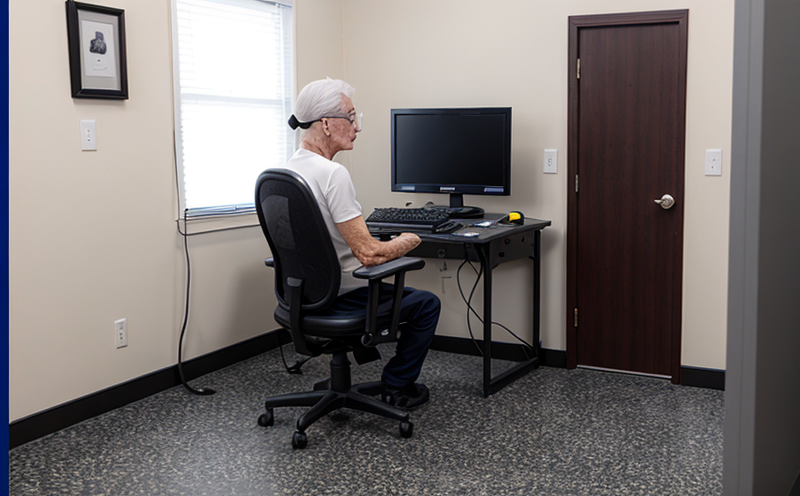ISO 12947-2 Martindale method Abrasion resistance of fabrics
The ISO 12947-2 standard specifies a method to determine the resistance of fabrics and related materials to abrasion using the Martindale Abraser. This test is widely recognized in the textile industry, particularly for quality assurance and compliance purposes. The Martindale method involves rubbing a specimen against an abradant under controlled conditions, then measuring the loss of fabric mass or thickness after a specified number of cycles.
The process begins with careful preparation of the specimen according to ISO 12947-2 requirements. Factors such as the type and size of the fabric, the nature of the abradant (e.g., wool felt), and the weight and speed of the abraser must be considered. The specimen is placed in a Martindale Abraser machine, which simulates real-world wear conditions by rubbing the material against an abrasive surface.
During testing, the number of cycles is typically set based on industry standards or client requirements. After the specified number of cycles, the fabric's mass loss and thickness reduction are measured using precise instruments like digital scales and micrometers. These measurements form the basis for calculating the abrasion resistance index (ARI), which quantifies the fabric’s ability to withstand wear.
The Martindale method is crucial in ensuring that textiles meet quality standards, particularly in sectors where durability is paramount, such as automotive interiors, upholstery, and outdoor gear. Compliance with ISO 12947-2 ensures that products can withstand prolonged use without deteriorating significantly. This testing not only enhances product longevity but also contributes to environmental sustainability by reducing waste.
In addition to its role in quality assurance, the Martindale method plays a vital part in research and development (R&D). By understanding how fabrics behave under different abrasion conditions, manufacturers can innovate new materials that offer superior wear resistance. This is particularly important for industries where fabric durability directly impacts customer satisfaction and brand reputation.
The Martindale test also serves as an essential tool in procurement processes, helping companies select suppliers who meet rigorous standards. By ensuring consistent abrasion resistance across all products, organizations can maintain high-quality standards throughout their supply chain.
Understanding the specifics of ISO 12947-2 is crucial for those involved in textile testing and quality management. The method's precision and repeatability make it a cornerstone in the industry, providing reliable data that informs critical decisions about product development, manufacturing processes, and supplier selection.
Benefits
- Enhances product durability and longevity.
- Promotes compliance with international standards, ensuring consistent quality across all products.
- Aids in innovation by providing insights into fabric performance under various abrasion conditions.
- Ensures reliable data for making informed decisions about product development, manufacturing processes, and supplier selection.
International Acceptance and Recognition
The ISO 12947-2 Martindale method is globally recognized and widely accepted in the textile industry. This standard provides a consistent framework for testing abrasion resistance, enabling manufacturers to compare results across different regions and countries. Compliance with this international standard ensures that products meet global quality benchmarks, facilitating smoother trade and collaboration between nations.
Many leading brands and corporations have adopted ISO 12947-2 as part of their quality control processes. By adhering to this standard, companies can ensure their products are reliable and durable, thereby enhancing customer satisfaction and trust in the brand. The widespread acceptance of this method also fosters a competitive environment where manufacturers strive to produce superior products that meet or exceed industry standards.
The international recognition of ISO 12947-2 underscores its importance in maintaining high-quality standards within the textile sector. By aligning with this standard, organizations can demonstrate their commitment to excellence and reliability, which is crucial in today's global market. This alignment also facilitates better communication between stakeholders, from suppliers to end-users, ensuring that everyone is working towards the same quality goals.
Competitive Advantage and Market Impact
The ISO 12947-2 Martindale method provides a significant competitive advantage in the textile industry. By ensuring consistent abrasion resistance across all products, companies can differentiate themselves in the market by offering superior quality and durability. This not only enhances customer satisfaction but also builds brand loyalty.
Compliance with this international standard is increasingly becoming a key factor for customers when selecting suppliers. Companies that adhere to ISO 12947-2 are seen as more reliable and trustworthy, which can lead to increased market share and better business relationships. In addition, the method's precision and repeatability enable companies to make informed decisions about product development and manufacturing processes, ultimately leading to cost savings and improved efficiency.
The widespread acceptance of ISO 12947-2 also contributes positively to a company’s reputation and market position. By aligning with this standard, organizations can demonstrate their commitment to excellence and reliability, which is crucial in today's competitive landscape. This alignment fosters better communication between stakeholders, from suppliers to end-users, ensuring that everyone is working towards the same quality goals.
In conclusion, compliance with ISO 12947-2 not only enhances product performance but also provides a strong foundation for business success. By adhering to this international standard, companies can ensure their products meet global quality benchmarks, thereby facilitating smoother trade and collaboration between nations. The competitive advantage gained through adherence to this method is invaluable in today's fast-paced market.
Frequently Asked Questions
- Ensures consistent quality across all products.
- Promotes compliance with international standards, enhancing brand reputation.
- Aids in innovation by providing insights into fabric performance under various abrasion conditions.





